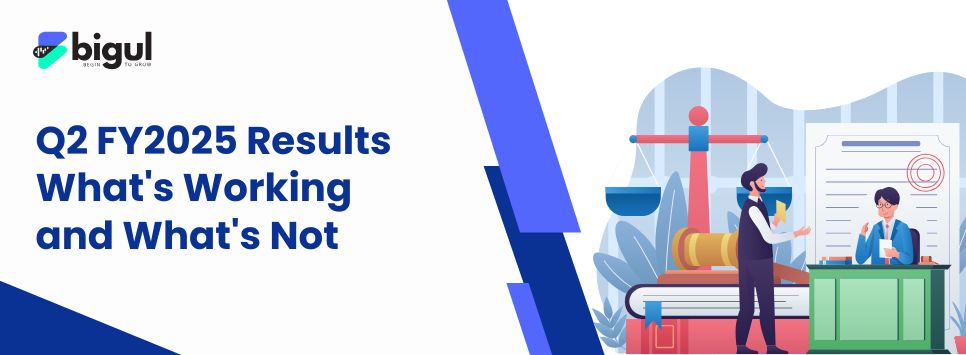The Indian stock market offers a variety of ways to grow wealth for investors with some experience. Rather than chasing individual “hot” stocks, savvy investors often look at broad strategies – understanding economic cycles, seeking long-term compounders, spotting emerging industry trends, and balancing growth with stability. In India, this means paying attention to big-picture sectors (like tech or energy), solid blue-chip companies, and shifts in macro conditions. By staying informed and patient, intermediate investors can position themselves for opportunities while managing risk. Let’s explore some strategic approaches, complete with insights from market experts.
Also Read | The Intraday Trading Tightrope: Your Guide to Profiting Within Market Hours
Dancing with the Economic Cycle: Sector Rotation
One smart way to find opportunities is sector rotation – shifting your portfolio among industries as the economy changes phase. In other words, when economic growth is slowing, you might favor defensive sectors (utilities, healthcare), but when expansion is picking up, cyclical sectors (banking, autos, consumer discretionary) often lead. In India, cyclical businesses like banks, auto makers or luxury goods can surge in a boom, whereas non-cyclical (staples, utilities, health) tend to hold steadier during downturns. Savvy investors “buy cyclical stocks right before the economic cycle begins to favour them and shift the investment to non-cyclicals” as headwinds grow.
Understanding this cycle is like dancing with the market: if you stay in step, you can capture growth. For example, if low interest rates or government spending boost industry, sectors like real estate or capital goods might outperform. Conversely, if inflation rises, commodities and energy stocks may shine. The key is to follow broad economic indicators (GDP growth, inflation, policy changes) and adjust sectors, rather than sticking rigidly to any single industry. This top-down approach helps you ride the waves of India’s economy – for instance, shifting from IT and exports into infrastructure and finance as domestic demand heats up, or the reverse if the global tech cycle turns.
Long-Term Compounders: Let Time Work for You
Among individual companies, one classic strategy is to find long-term compounders – businesses that steadily grow profits and reinvest earnings over many years. These are typically well-managed firms with competitive moats (market advantages) and a track record of raising earnings. In practice, this means identifying companies whose earnings and cash flows have grown consistently, often paying dividends that, when reinvested, fuel even more growth.
Investing in such compounders requires patience and a long horizon. These “consistent compounding stocks can be a great way to create long-term wealth,” offering earnings growth and dividends that are plowed back into the business. If held for a decade or more, compounding can make a huge difference. For example, veteran investors often point to companies that have grown from a few thousand crore to multi-lakh crore valuations over 10–20 years, illustrating what “powerful compounding” looks like.
To harness compounding, focus on business quality: strong return on equity, low debt, and growing market share. Many top compounders also reward shareholders with dividends; reinvesting those payouts can further boost your returns. The idea is to “hold onto the stock for an extended period, allowing the power of compounding to work its magic.” Don’t get distracted by short-term swings – over time, a compounding stock’s steady growth can significantly increase your wealth.
Emerging Sectors to Watch
While blue-chips and compounders form the portfolio’s bedrock, new growth areas offer exciting upside. Several sectors are poised for takeoff in India’s next phase of growth. For instance:
-
Tech & Digital Services: India’s IT industry is a pillar of its economy. As companies worldwide move work to the cloud and adopt AI and big data, demand for Indian IT expertise is surging. Firms that provide cloud computing, cybersecurity, or AI consulting are benefiting as businesses modernize. Even post-pandemic, the remote-work trend has companies increasingly tapping India’s tech talent.
-
Green Energy & Renewables: India has set ambitious climate goals and is rapidly expanding solar, wind, and other clean energy. The country targets net-zero carbon emissions by 2070 and plans 500 GW of clean energy by 2030. Government policies – subsidies, tax breaks and land support – encourage renewable projects. Big corporations are investing heavily in solar parks, wind farms and green hydrogen under sustainability initiatives. This push is creating more public companies in the sector; for example, solar and wind energy firms have recently listed on exchanges. Investors can watch broad renewables indices or sector funds if they wish exposure to this “energy transition” story.
-
Defense & Aerospace: The “Make in India” program is giving a big boost to defense manufacturing. India aims to reach $25 billion in defense production by 2025, including $5 billion in exports. New policies allow up to 74% FDI in defense, inviting international partnerships. Private companies and startups are entering drones, radars, missiles and other technologies. With global tensions and India’s modernisation needs, this sector could gain momentum.
-
Electric Vehicles (EVs) & Auto Parts: Auto sales in India are gradually shifting to electric. Government schemes offer subsidies on EV purchases and fund charging infrastructure. Rising petrol prices are driving two- and three-wheeler buyers to consider EVs. Companies are rapidly installing fast-charging stations nationwide. At the same time, India is expanding local EV manufacturing (batteries, motors, components) to reduce imports. The auto and auto-ancillaries index might be a way to play this trend broadly.
These sectors are not guaranteed home runs, but they reflect India’s evolving economy. An investor doesn’t need to pick the single winner – observing these themes helps spot which industries have tailwinds from government policy and global demand. In a diversified portfolio, having some exposure to these emerging areas can complement the more stable blue-chips.
Blue-Chip Stability: Foundations of a Portfolio
While chasing growth, it’s wise to maintain a solid base of blue-chip investments. In Indian markets, blue-chip stocks generally mean large, well-established companies (many of them part of the Sensex or Nifty 50 indices) with proven track records. These firms tend to have strong finances, dominant market positions and often pay dividends.
Owning blue-chips can anchor your portfolio. These stocks might not skyrocket overnight, but they usually weather downturns better and compound value steadily. Examples include major banks, consumer goods giants, and energy leaders in India. For intermediate investors, blue-chips also offer liquidity and transparency. If you’re unsure about a sector, a well-chosen diversified fund or index (like a Nifty 50 ETF) can capture the broad market without over-allocating to one company. That said, don’t rely on blue-chips alone for returns – combine them with mid- or small-cap exposure for balanced growth.
Growth vs Value: Choosing Your Style
A classic debate is growth vs. value investing, and in India both styles have their place. Simply put, growth investors look for companies expected to expand earnings rapidly, often paying little dividend, whereas value investors seek stocks that appear cheap relative to fundamentals.
In practice, choosing growth or value depends on market cycles and your own risk tolerance. If you’re bullish on tech innovation or an economic boom, growth stocks (even at high P/E multiples) might outperform. If you prefer bargains and dividend yields, value stocks can offer steadier gains once sentiment shifts. Importantly, they often take turns: when high-growth areas get expensive, value names may catch up, and vice versa. The key advice is to understand the business, not just the label. Relying only on ratios can be misleading – you must assess whether a company can sustain its growth or really deserves its discount.
For an intermediate investor, a blended approach often works best. You might allocate a portion of your portfolio to stable value/blue-chip names for reliability, and another portion to high-potential growth or cyclical plays. Alternatively, broad index funds naturally mix the two. Keep your financial goals, time horizon and comfort with volatility in mind. If a stock’s price looks too frothy, it may be prudent to wait or diversify into other sectors. Conversely, don’t ignore solid companies just because they’re “boring” value; over the long run, these are often the compounders that deliver wealth.
Bringing It All Together
In summary, the best opportunities in India’s stock market come from combining strategies: follow the economic cycle (sector rotation), hold onto high-quality compounders, watch emerging growth themes, and balance portfolios with blue-chips. Stay updated on macro trends (inflation, government policy, global demand) so you can tilt your investments to the sectors likely to benefit. Do your homework on business fundamentals – for example, reliable compounding depends on genuine profit growth, not short-lived hype. By thinking like a business owner (not a speculator), and mixing value and growth sensibly, intermediate investors can find attractive odds.
Ultimately, Indian markets have historically rewarded patient, well-informed investors. Keep learning and avoid emotional trading. With clear strategy, diversification and a long-term outlook, you can leverage India’s growth story while managing risk.
Also Read | Inflation: Meaning, Causes, and Formula









.jpg)
.jpg)
